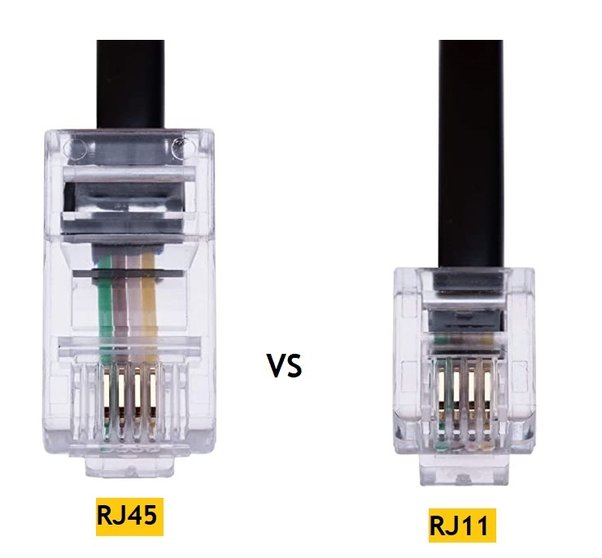
Diferences Between RJ45 and RJ11 Connectors
There are several RJ type wire connectors, such as RJ45. The letters “RJ” stand for registered jack, which is a standardized telecommunication network interface, designed by the Bell system and managed by Federal Communication Commission (FCC) to connect voice and data equipment to a service provided by a local or long distance carrier.
There are many different types of RJ-style connectors, such as RJ11, 14, 21, 35, 45 and so on, and both types. The most common ones are RJ11 and RJ45. Because these two connectors look similar, many people often mix them up.
This post will point out some differences between these connectors so you can understand better.
What is the RJ45 connector?
RJ45 connector or RJ45 plug is a type of twisted pair connector. It is usually made of a piece of plastic with eight pins on the port, four of the pins are used for sending and receiving data, while the other four are used for other networking technologies or devices, so this type of connector is also called 8P8C, Modular connector (8 positions, 8 drivers). This type of connector is suitable for many applications such as Ethernet network, telecommunications, factory automation and so on. The Ethernet cable terminated with the RJ45 connector is also called RJ45 cable, like cat5 and ca6 cable.
What is RJ11 connector?
RJ11 connector is the most commonly used for telephone lines. It has a total number of six connector positions, but normally uses 2 of the 6 positions, so it can be wired with a 6P2C (6 positions, 2 conductors). However, these types of connectors are very rare, most often an RJ11 connector is 6P4C (6 positions, 4 conductors) with two of the four wires running to the unused junction box. RJ11 is the most common type of jack connector today and is used to terminate telephone lines. You must keep in mind that when using an RJ11 conductor, be sure to follow all instructions, so your connection to any device is done correctly.
Comparison between RJ45 and RJ11
Although RJ45 and RJ11 look similar, there are still some differences between them.
• Application: The biggest difference between these two is where they are actually used. The RJ45 connector is used in networks, where you connect computers or other elements between each other, while RJ11 is the cable connector being used in appliances telephone, ADSL and modem cables, etc.
• Structure: In addition to the application, there are also differences in the structure of the connector that an individual can see and identify easily. If you look closely at the two connectors, you'll see that there are only four wires inside an RJ11 and there are eight wires inside an RJ45. As a consequence of having to accommodate more wires, the RJ45 connector is also slightly larger than the RJ11.
Can RJ connectors be plugged into an RJ45 slot?
As we mentioned above, the RJ45 connector is larger than the RJ11, so it is possible to connect a RJ11 connector to an RJ45 slot, but you should avoid this as it may damage the device that has the RJ45 slot, whether it is a switch or a network adapter. That is when you use an RJ11 connector connected to your telephone line.
If you look closely, you can find many differences between these two types of connectors by just looking at them, like the size, construction and wiring pattern we mentioned above. According to different applications, RJ11 and RJ45 connectors are different, the former is used for networks, while the latter is used for telephone lines. To choose the right kind of connector, you must take these factors into account.
